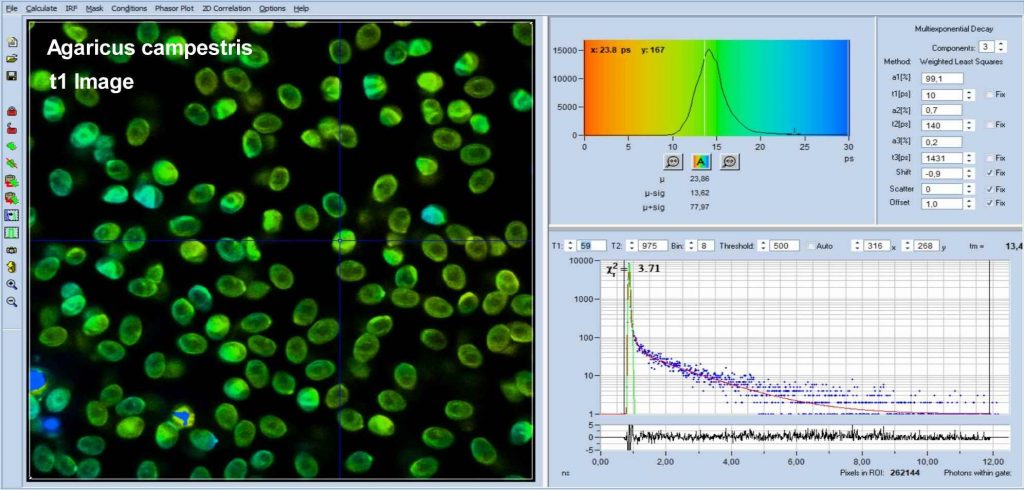With an IRF width of 18 ps FWHM and a time channel width in the sub-ps range, the bh DCS-120 MP system is able to record extremely fast fluorescence decays. We used the system to perform FLIM on the spores of a variety of mushrooms that are commonly found in the Middle-European and North-American area. To our surprise, we found extremely fast components in the decay functions. The decay times and the amplitudes correlate with the colour of the spores. The darker the spores are, the more pronounced the fast component is. The fastest decays were found for mushrooms with dark brown and black spores, such as Agaricus campestris, Hypholoma fasciculare, and Coprinus comatus. The fluorescence decay for these species is almost entirely dominated by a fast component, with amplitudes of 99% and more, and lifetimes from t1 = 12 ps down to 7 ps. Two examples are shown in the figures below. The mechanism of these fast decays remains unknown. Our data suggest that an extremely fast energy transfer into a dark acceptor is at work. For more information, including lifetime images and decay curves of spores from 15 different mushroom species, please see Application Note, ‘Two-Photon FLIM of Mushroom Spores Reveals Ultra-Fast Decay Component‘.
Back to News



